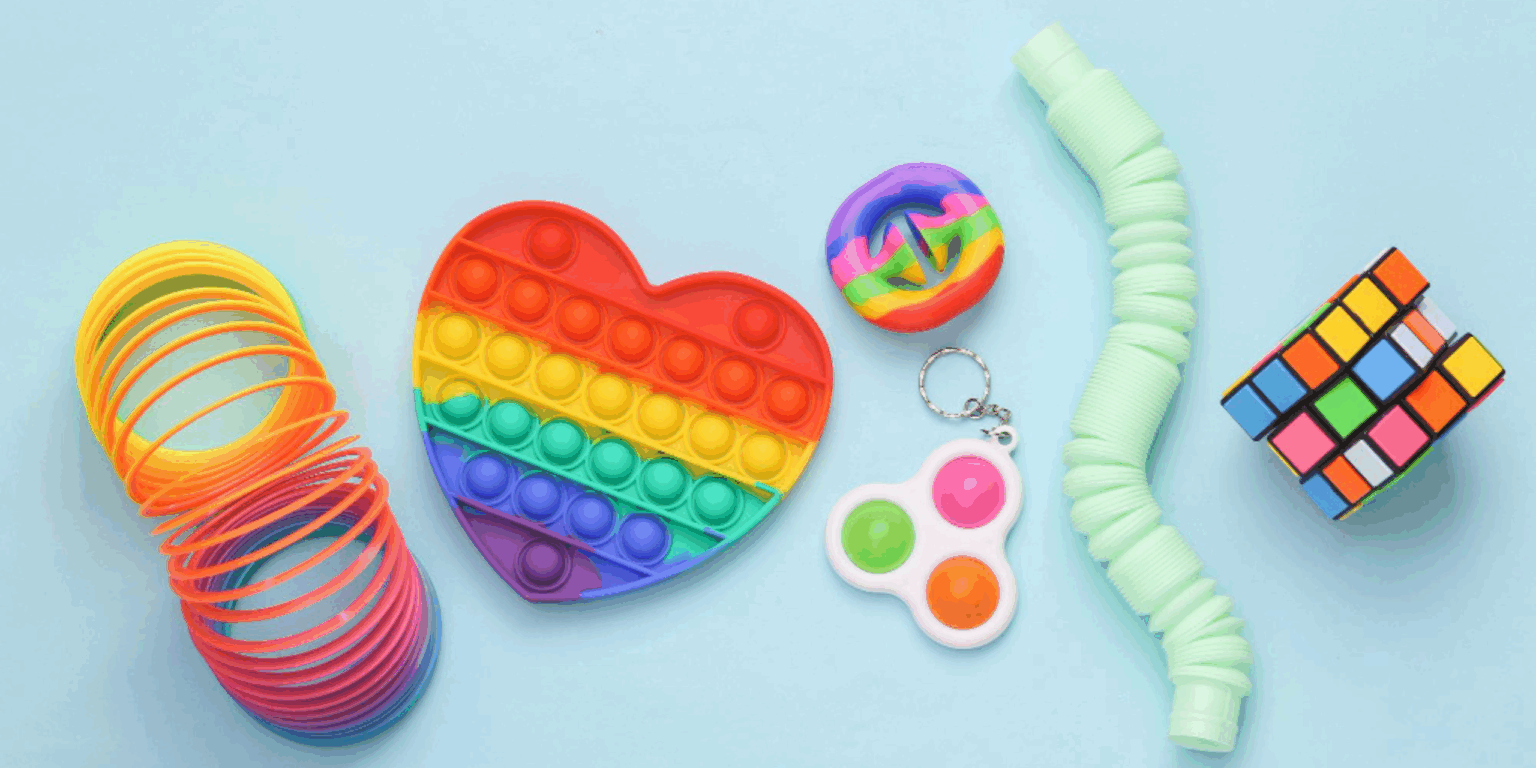
10 Sensory School Supply Items to Support Your Child in the Classroom
Justin Henning
Oct 10, 2025
Get the Guidance You Deserve, Right to Your Inbox
Whether you’re a caregiver, care professional, or individual seeking independence, We aim to keep you informed and inspired. Receive updates on services, events, and stories of hope by signing up to become a part of our email list below.
Going back to school involves more than just books and pencils for children with IDD. Many have unique sensory processing needs. The sights, sounds, textures, and smells of a busy classroom can feel overwhelming. This intense environment can make it difficult for them to focus, learn, or even feel comfortable.
Choosing the right sensory school supplies can make a huge difference. These items foster comfort, improve focus, and help your child feel truly included in their learning environment.
What are Sensory-Friendly School Supplies?
Sensory-friendly school supplies are specially designed tools that help children, especially those with autism, ADHD, anxiety, or intellectual and developmental disabilities (IDD), manage sensory input and improve focus in the classroom. These supplies, such as fidget toys, weighted lap pads, noise-canceling headphones, and flexible seating, support emotional regulation by providing the right sensory stimulation. Because many children with IDD experience sensory processing challenges, becoming overstimulated or under-stimulated by everyday sounds, lights, or textures, these tools play a crucial role in helping them feel more comfortable, calm, and ready to learn.
Sensory School Supplies: Tools That Make a Difference
The right sensory tools can create a more comfortable and supportive learning environment for your child. When thoughtfully chosen, these items help meet specific sensory needs, making it easier for your child to focus, feel secure, and thrive in the classroom. Here are 10 sensory supplies that can make a meaningful difference.
1. Noise-Canceling Headphones
School can be loud. These headphones help reduce distracting background noise. They create a quieter space for your child to focus. This can be very helpful in areas like busy cafeterias or playgrounds.
2. Fidget Toys
Sometimes children need to move or keep their hands busy to concentrate. Fidget toys give them something to do quietly. They help manage restlessness and improve focus.
3. Weighted Lap Pads or Blankets
These items provide a gentle, firm pressure. This “deep pressure input” can be very calming. It helps many children feel more grounded and regulated, reducing their school anxiety.
4. Chewelry (Chewable Jewelry)
Some children need to chew to help them calm down or focus. Chewable jewelry offers a safe and discreet way to get this oral sensory input. It looks like regular jewelry but provides a safe way to chew.
5. Sensory Brushes and Massagers
These tools provide a soothing touch. Using a sensory brush or massager can deliver calming tactile input. This helps many children with sensory regulation.
6. Sensory Discs
These are textured tools. Your child can place them on their hands or feet. They offer different tactile sensations and can be visually interesting too. They help with sensory input and engagement.
7. Flexible Seating Options
Sitting still for long periods can be difficult. Flexible seating allows for small movements. This can help improve concentration and body awareness. It gives your child the movement their body craves. Examples include wobble cushions or yoga balls.
8. Adaptive Rulers and Pencil Grips
Fine motor skills can be a challenge. Adaptive rulers make drawing lines easier, while pencil grips make holding a pencil more comfortable. These tools help improve handwriting and reduce frustration.
9. Calming Colors and Visual Supports
Bright colors can sometimes be overwhelming. Using calming colors in their school supplies can help. Visual supports reduce visual overstimulation and create a more peaceful learning space. Examples include color-coded binders or calming pictures.
10. Sensory Play Kits
These kits are great for breaks. They contain items like textured tubes or squishy balls. These safe tools allow your child to explore different textures. This can be calming and help them reset during activity transitions.
How to Choose the Right Sensory Supplies
Choosing the right sensory school supplies for your child means thinking carefully about their specific needs. It’s not a one-size-fits-all situation. Consider the following before buying supplies:
Individual Needs
Every child’s sensory profile is unique. What calms one child might overstimulate another. Observe your child closely. What sounds bother them? What textures do they seek out or avoid? Do they fidget a lot, or do they seem low on energy?
For example, if they seek deep pressure, a weighted lap pad or blanket could be very helpful.
Durability and Safety
School supplies need to be tough. Choose items made from durable, high-quality materials that can withstand daily classroom use. Safety is also very important. Make sure any items you choose are non-toxic and free from small parts that could be a choking hazard. Look for products designed specifically for sensory use, as they often meet higher safety standards.
Routine Integration
Think about how they can be used every day. Incorporating sensory tools into your child’s specific routine can make them more effective. For example, if they struggle to focus during quiet work time, a fidget toy can help them. Or if they can’t manage the noise of assembly, try noise-canceling headphones. Discuss with your child when and how they can use their sensory items so it feels natural and not disruptive.
Collaboration with Educators and Therapists
Work closely with their teachers, occupational therapists, and any other school staff. Share your observations about your child’s sensory needs and discuss the supplies you are considering. They might have valuable insights or suggestions based on their classroom experience or professional knowledge.
Sensory Supplies Create an Inclusive Learning Environment
Sensory-friendly supplies are a part of creating a truly inclusive learning environment for everyone. These items help your child feel comfortable and supported. This allows them to participate more fully in classroom activities.
The benefits extend beyond your child. When your child can focus better and regulate their emotions, it creates a calmer and more positive atmosphere for their classmates too. Educators also benefit by having a classroom where all students can learn effectively.
By openly using sensory supports, we encourage acceptance and help normalize these tools. It teaches all children that everyone learns differently and that it’s okay to use what you need to succeed. This helps create a classroom where every child feels seen, valued, and ready to learn.
Conclusion
The right sensory school supplies can truly transform your child’s learning experience. Don’t wait until the last minute to think about these important tools. Proactively plan for the upcoming school year to ease transitions and boost your child’s confidence.
Every child is unique, so start small. Observe what works best for your child, and be ready to adjust as their needs change. With thoughtful choices and ongoing support, you can help your child have a successful and positive school year.
SVP Marketing
Download Your FREE Supported Living Guide!



